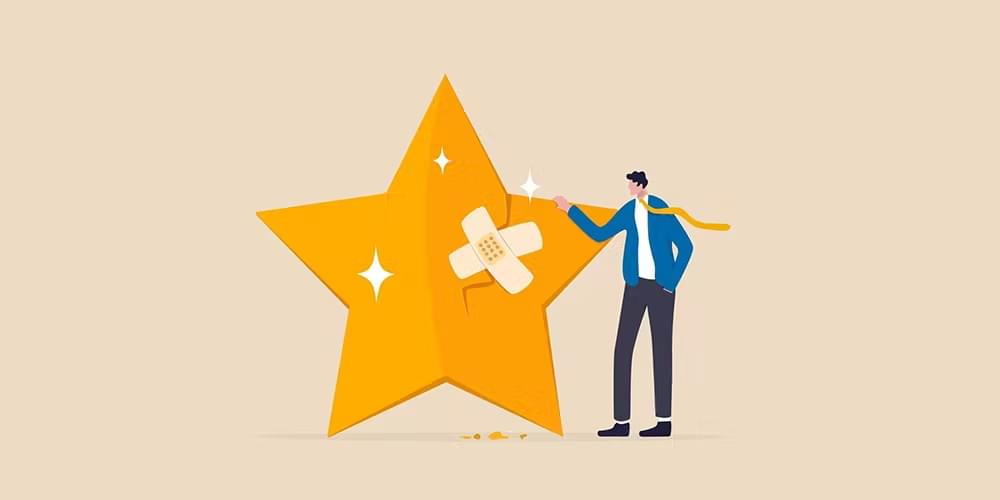
16 Effective SaaS Customer Retention Strategies (That Can Actually Work)

Customer churn can be a nightmare for SaaS founders. It’s a constant threat that can derail even the most successful companies. This is why customer retention is one of the most critical strategies for SaaS companies.
As a SaaS business owner looking for ways to improve retention is the top priority. You might have tried several SaaS customer retention strategies, and some may have worked better. You will read some useful SaaS retention strategies here to help accelerate your business end goals. Some of the critical elements of a well-built B2B SaaS customer retention strategies are stated below:
- Provide your users with excellent customer service.
- Responding to their inquiries and concerns promptly and courteously. Going above and beyond to help them solve their problems.
- Regularly communicate with your customers, letting them know about new features, special offers, and other news.
- Constantly innovating and improving your products and remind them that you are always working to improve your products and services.
- Keep your prices competitive. Customers will be tempted to switch to a competitor if your prices are too high. But if your prices are too low, you will not be able to make a profit. Strike a balance between these two extremes, and you will be more likely to keep your customers.
What is SaaS customer Retention?
SaaS customer retention measures how long users stick around after staying signed up for your service.
It’s essential to track retention carefully because it’s a key indicator of whether your service provides value to users. If people are signing up and then quickly leaving, it’s a sign that something isn’t working.
There are a few different ways to measure retention. The most common is “cohort retention” which looks at users who simultaneously sign up for your service.
You can also measure “overall retention” which looks at all the users who have ever signed up for your service. This is useful for tracking long-term trends.
The Impact of Customer Churn
Think of your SaaS revenue as a bucket. Every time a customer churns, it’s like a hole in the bucket. Recurring revenue leaks out, and you lose profitability over time. While acquiring new customers can help you fill the bucket, customer retention is equally essential for plugging the leaky holes. In fact, it’s much easier and cost-effective to retain an existing customer than to acquire a new one.
SaaS customer retention should be your top priority when winning the churn and retention cycle. If you’re retaining your customers, you’re gaining revenue and making your growth strategies effective. You must ensure your customers stick around long enough to become profitable. Otherwise, all your acquisition costs will be for nothing.
The Value of Existing Customers
Your existing customers are some of the most promising users you have. They’ve already paid for your product and gone through the onboarding process. It’s essential to ensure these users stay, or you’ll be doing your business a disservice.
SaaS customer retention means keeping your customers engaged with your product until it becomes a part of their daily lives. Long-term customers are likelier to become promoters of your product, bringing in more users via word-of-mouth referrals. They’re also more likely to make additional purchases and increase their lifetime value.
By retaining your existing customers, you can increase their lifetime value and drive more revenue for your business. It’s a cost-effective strategy to help you win the churn and retention cycle over time.

16 Effective B2B SaaS Customer Retention Strategies
As a SaaS business, SaaS retention strategies are crucial to your long-term success. It’s easier to retain a customer than to acquire a new one. So, developing effective B2B SaaS customer retention strategies is essential. In this article, we will explore 16 strategies that will help you retain your customers.
1. Set Clear Expectations
Set customer expectations clearly from the beginning. One of the main reasons for churn is when user expectations are unmet. Be very clear in your messaging about adding value to your users. Tell them exactly what they will get when they sign up. Slightly under-promise on the perceived value added and overdeliver, which leads to customers being delighted. Remember, overpromising value and under-delivering on it is a road to disaster.
2. Deliver the “A-Ha” Moment
The first step to retaining long-term customers is to ensure a smooth onboarding process. As soon as a customer signs up, your goal should be to capture their attention and deliver value without any glitches. To achieve this, you can send out instructional content to familiarize users with the service and its features. If your service is complex, offering free training to users can be helpful.
Your ultimate goal should be to guide the user toward the “A-Ha” moment. This is the moment when the customer realizes the value your service adds to their life. Optimizing your onboarding process can create a lasting impression on your customers and build a strong foundation for your long-term customer retention strategy.
3. Highlight Your Value Proposition
Your value proposition is what sets your product apart from your competitors. Having a clear and concise value proposition is crucial to tell users the concrete results they can expect in just a few seconds. By delivering on your value proposition, you can retain customers who signed up for your service in the first place.
By focusing on your value proposition, you can differentiate your service from your competitors and create a loyal customer base. Make sure to remind users about your value proposition regularly. Show them what they’re gaining by using your service, and this will encourage them to continue their subscription.
4. Upsell
Upselling is one of the best SaaS retention strategies. Upselling not only generates more revenue for your business, but it also deepens your relationship with the customer. Long-term customers who see the value in your service are more likely to spend more on additional features or services.
By upselling, you can tackle multiple pain points for the user and make them more committed to your service. With higher billing amounts, the user’s commitment increases, making them more likely to stick around longer. Moreover, you can offer customized deals to long-term customers, further strengthening your relationship.
5. Send Personalized Tips to Boost Engagement
Sending personalized, targeted tips to your customers can help them get the most out of your product or service. For instance, you can set up automated emails triggered when users complete specific actions, such as designing a sales page. You can congratulate them on their achievement and offer tips on optimizing their page. You can increase engagement and make them stay longer by providing useful information that adds value to their efforts.
6. Maintain Regular Interaction with Your Customers
Regular interaction with your customers is vital for building lasting relationships. It’s not enough to send content-heavy emails; you need to reach out to them more personally. Give them a call occasionally to say “hi” or ask how they’re doing with the product. This shows that you care about their success and are committed to helping them achieve their goals.
7. Continuously Improve Your Product
Your product or service must be continuously improving to meet the changing needs of your customers. Invite constructive feedback on your product and use it to make upgrades and release new versions. Doing so, demonstrates that you’re committed to helping your customers achieve their objectives. You can keep users interested and retain their loyalty by releasing new versions. Moreover, you can fight boredom and increase engagement by releasing new versions. Over time, users may become less engaged with a similar platform, decreasing perceived value.
8. The Importance of Over-the-Top Customer Service in SaaS
Customer service is a critical component of any organization, and it is essential in the SaaS industry. Customer service can make or break a company. While a user may tolerate a bug in the UI if their problem is solved quickly, a poor customer service experience can drive them away. According to a survey, 67% of users cite a terrible customer service experience as the primary reason for churn. Therefore, it is crucial to provide excellent customer service to keep your users happy and loyal.

9. Practice Delighting Users
When it comes to customer service issues, always go above and beyond to delight your users. Think of every issue they face as a bump to the perfect customer experience. Not only should you remove the bump, but you should also provide users with something extra to make up for the trouble they encountered. Doing so demonstrates your commitment to solving their problems and building a positive relationship with them.
10. Consider a Reward Program
When users stay with you for an extended period, reward them for their loyalty. A loyalty program can benefit both the user and your company, making it a win-win situation. Loyalty rewards don’t have to be complicated. A simple discount, upgrade, or freebie, such as a free month of subscription or an upgraded plan, can inspire further loyalty.
11. Proactive Listening
Collecting feedback on the user experience is essential to optimize your customer service resolution process.
- However, surveys on service tickets can annoy the user.
- To avoid this, ask for feedback where users feel empowered, such as your pricing page or monthly newsletter.
- Building a support community around your brand is an excellent way to make users feel like they belong and provide invaluable feedback.
- By measuring engagement and monitoring user behavior, you can intervene with the right message to retain more users at the right time.
12. Avoid Surveys on Service Tickets
Sending surveys immediately after resolving an issue can be perceived as annoying and intrusive. Instead, try to find the right time and place to ask for feedback. This will make your users feel in control and more likely to provide you with valuable feedback.
13. Feedback From The Right Places
To get the most effective feedback, ask for it in places where users are likely to engage with your brand. Placing a link to your feedback form on your pricing page or including it in your newsletter can effectively encourage users to share their thoughts. Make sure that the feedback form is visually appealing and easy to use.

14. Make Users Part of a Community
Building a community around your brand can help users feel connected and invested in your product. Encourage interaction between users and company representatives to create a personal relationship. Moz’s feature request forum is an excellent example of this approach, where users can suggest new features, and the company can respond to them.
15. Measure Engagement
Tracking user behavior is one of the most effective ways to gather feedback without bombarding users with surveys. Use technology to measure engagement with your website or product and analyze the results in a dashboard. At Churnfree, we have developed a tool that allows you to track all your user engagement KPIs in one place and alerts you when users are exhibiting churn-like behavior.
16. Exit Surveys
If a user wants to leave, make it easy for them to do so. Instead, make your cancellation policy straightforward to avoid negative reviews on social media. Exit surveys can provide valuable insights into why users leave, allowing you to increase retention for future users.
Bottom-line
SaaS customer retention strategies—putting it into practice
In order to SaaS customer retention strategies to work successfully, your business framework must strike a balance between flexible user experience and efficient business processes that encourage you to take action before it’s too late.
For this, you’ll need several systems working seamlessly together, including:
- Payments processors
- Subscription billing and management logic
- Churn calculation tool
- Customer feedback
- Sales tax compliance
- Reporting functionality
- Customer support systems
SaaS customer retention is all about respecting your users’ time and problems and making their experience worthwhile. By understanding your users’ needs and providing excellent customer service, you can keep them happy and loyal. What are your favorite user retention strategies?

